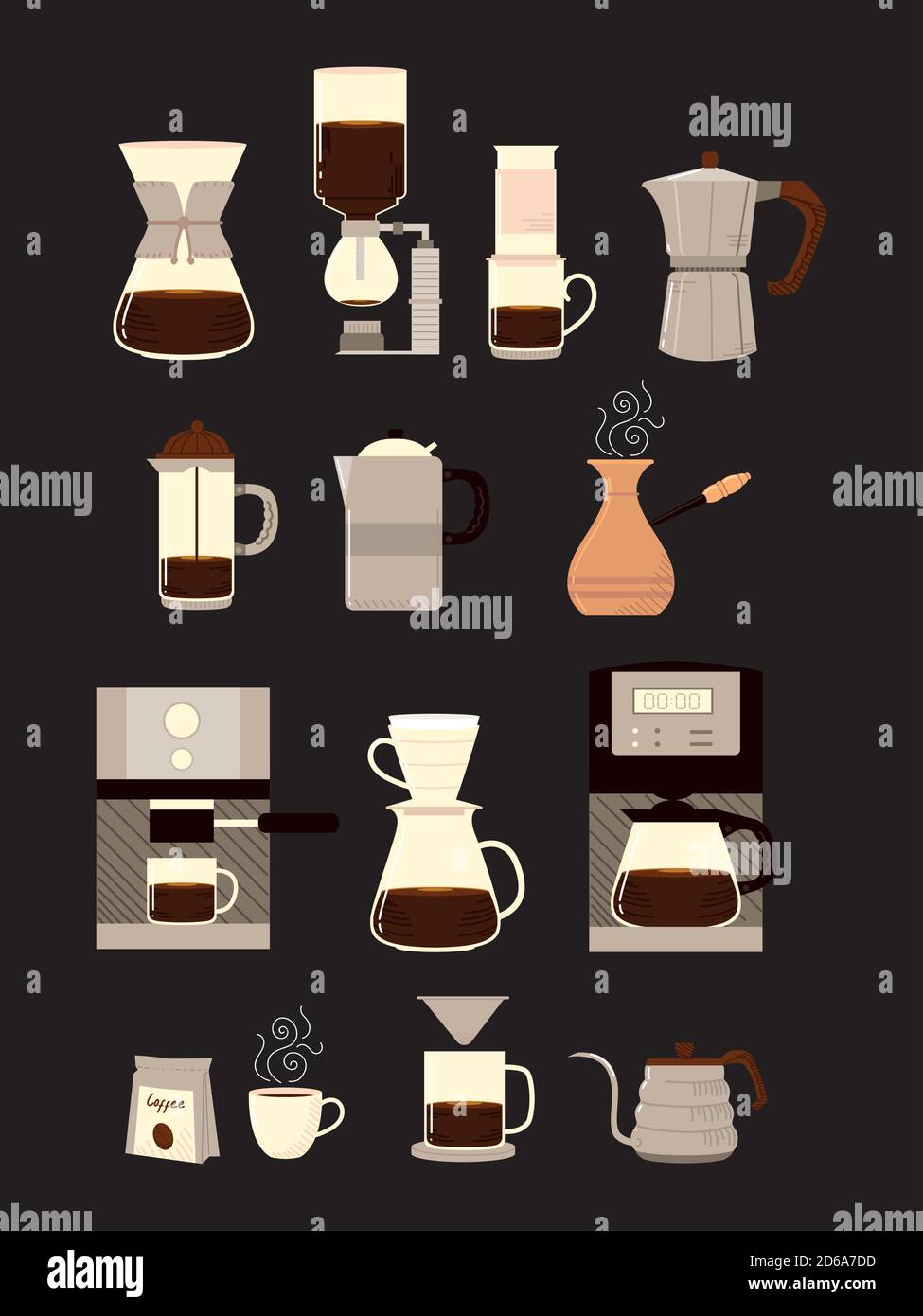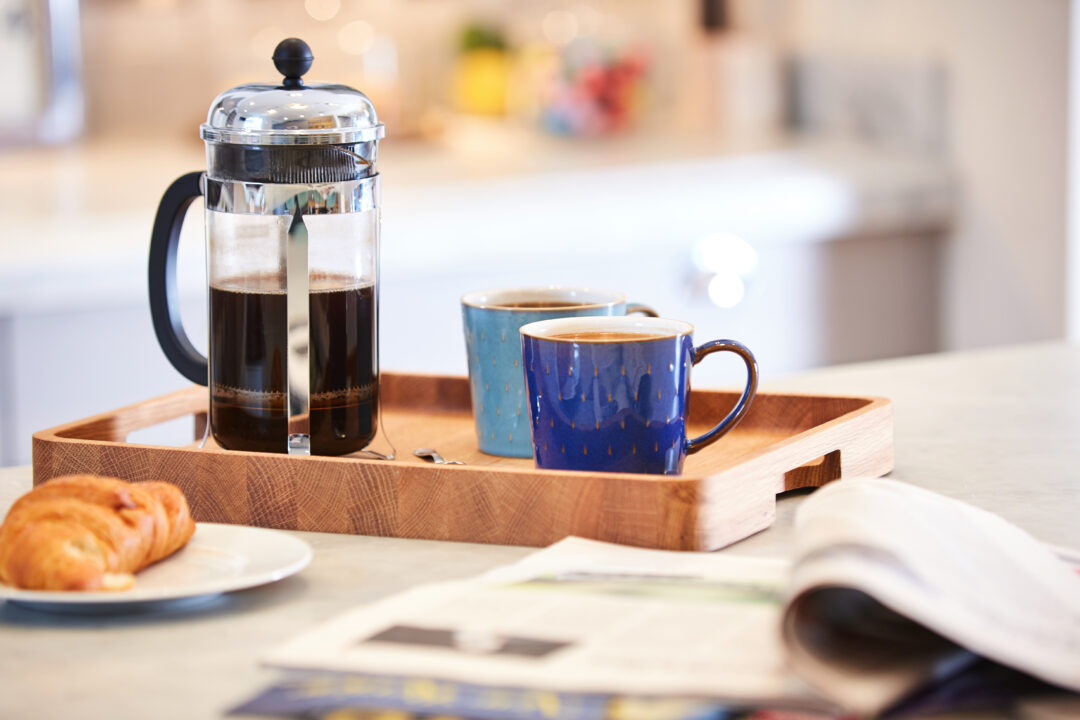Finding the Art of Coffee Brewing Methods: Tips for each Lover
Wiki Article
The Science Behind Coffee Brewing: How Temperature Level and Time Affect Your Beverage
Comprehending the scientific research behind coffee brewing exposes that temperature level and time are not plain variables but critical elements that determine the beverage's taste profile and general top quality. As we check out the nuances of these elements, the question emerges: just how can one properly balance temperature level and time to accomplish that excellent brew?The Chemistry of Coffee Removal
The chemistry of coffee removal looks into the elaborate procedures that transform raw coffee beans right into the fragrant beverage taken pleasure in worldwide. This change primarily entails the solubility of various compounds existing in the beans, which are affected by factors such as grind size, water quality, and the developing method used.During the developing process, warm water serves as a solvent, removing soluble compounds, including high levels of caffeine, lipids, acids, and sugars, from the coffee premises. Each substance adds to the taste profile, fragrance, and body of the last beverage. Acids are liable for tangy and brilliant notes, while oils contribute to an abundant mouthfeel.
The first phases of brewing extract acids and sugars, leading to a pleasurable acidity, while long term removal can lead to anger due to over-extraction of unfavorable substances. Understanding these chemical communications is critical for maximizing brewing strategies, as the equilibrium between removal time and water temperature level can substantially affect the total top quality of the coffee.
Ideal Developing Temperatures
Discovering the ideal developing temperature level is necessary for opening the complete capacity of coffee flavors and scents - coffee brewing methods. Study indicates that the optimal variety for developing coffee lies in between 195 ° F to 205 ° F(90 ° C to 96 ° C) Within this range, the removal procedure effectively liquifies the preferable soluble substances in coffee beans, resulting in a flavorful and well balanced cupBrewing at reduced temperatures, such as listed below 195 ° F(90 ° C ), may cause under-extraction, producing a weak and acidic brew with soft tastes. On the other hand, brewing at temperatures going beyond 205 ° F(96 ° C) can bring about over-extraction, producing a extreme and bitter preference due to the excessive dissolution of unwanted substances, such as tannins.
Furthermore, the excellent brewing temperature level can vary depending upon the coffee bean type and roast level. As an example, lighter roasts commonly take advantage of slightly greater temperatures to improve their complex flavor profiles, while darker roasts may be better matched to lower temperature levels to minimize resentment.
Ultimately, keeping precision in developing temperatures is critical for attaining an unified equilibrium of flavors, ensuring that every cup of coffee delivers a rewarding sensory experience.
Influence of Developing Time
Brewing time plays an essential function in figuring out the flavor account and total top quality of coffee. The extraction process, which influences the preference, fragrance, and body of the drink, is largely reliant on for how long the coffee premises are in contact with water. Shorter developing times can cause under-extraction, leading to a weak or sour taste, as not sufficient soluble compounds are dissolved. On the other hand, extended developing can cause over-extraction, where unfavorable compounds are released, causing a bitter or astringent preference.Optimum developing time varies depending upon the technique utilized and the grind dimension of the coffee. A French press commonly calls for about 4 mins, while coffee extraction is generally finished within 25 to 30 seconds. It is vital Get the facts to adjust developing time in conjunction with other variables, such as water temperature level and coffee-to-water proportion, to attain the desired taste profile.
Recognizing the influence of developing time enables coffee enthusiasts to improve their brewing strategies, eventually enhancing the sensory experience of their cup (coffee brewing methods). With careful interest to this variable, one can open the full capacity of the coffee, exposing its unique qualities and subtleties
Brewing Methods and Their Effects

As an example, methods like French press and chilly mixture enable for a much longer steeping time, resulting in a fuller body and durable taste because of raised extraction of oils and soluble solids. On the other hand, coffee developing uses high stress and a much shorter removal time, creating a concentrated shot that highlights intense tastes and an abundant crema.
Pour-over techniques, such as Chemex or V60, provide an even more regulated removal process, enabling the brewer to adjust flow price and water distribution, which can boost brightness and clearness. On the other hand, percolation approaches cycle water through the coffee grounds numerous times, causing a stronger, usually bitter browse around here flavor.
Finally, making use of paper filters versus metal filters can additionally affect the final taste; paper filters commonly produce a cleaner cup by trapping oils and great particles, while steel filters allow even more oils to travel through, contributing to a fuller mouthfeel - coffee brewing methods. Recognizing these nuances can boost the coffee experience significantly
Tips for Perfecting Your Mixture
A well-executed brew can change also the simplest coffee right into an exceptional experience. To achieve this, interest to information is crucial. Start with top quality, newly roasted beans, as their flavor account diminishes in time. Grind the beans simply before brewing to take full advantage of freshness, making sure the grind size matches your developing method-- coarser for French press and finer for coffee.Water top quality plays a vital function; usage filteringed system water devoid of impurities. The perfect developing temperature level varies in between 195 ° F and 205 ° F(90 ° C to 96 ° C ) As well warm can swelter the coffee, while too great may under-extract flavors.
Timing is equally important. For immersion methods, soaking for 3 to see here now 5 minutes is ideal, whereas drip approaches commonly take about 5 minutes. Try out brew times to discover your preferred toughness.

Final Thought
In summary, the elaborate relationship in between temperature and time is paramount in the coffee brewing process. Recognizing these scientific concepts encourages individuals to fine-tune their developing methods, eventually leading to a much more delightful and well balanced coffee experience.Comprehending the scientific research behind coffee brewing reveals that temperature and time are not mere variables yet critical aspects that determine the drink's flavor profile and total high quality. Comprehending these chemical communications is critical for maximizing brewing techniques, as the equilibrium between removal time and water temperature level can significantly affect the overall high quality of the coffee.Developing time plays a critical role in figuring out the flavor account and total top quality of coffee. By focusing on these components-- bean high quality, grind size, water temperature, soaking time, and proportion-- you can raise your coffee brewing process, resulting in a consistently premium mug.
In summary, the complex connection in between temperature and time is paramount in the coffee developing procedure.
Report this wiki page